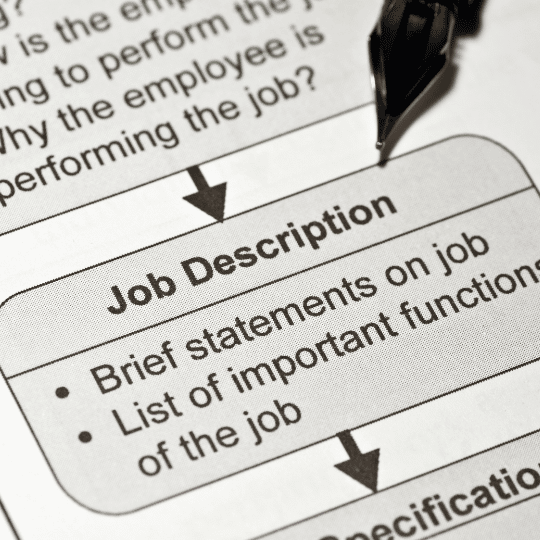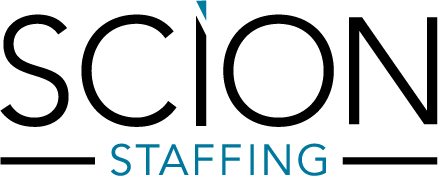
11 Mar How to Write an Effective Job Description: Do’s and Don’ts
A job description is a document that describes the duties and responsibilities of a particular position. This document is usually written by hiring managers or human resources professionals. The purpose of writing a job description is to attract qualified candidates who are interested in the position. Job descriptions are often used by recruiters and hiring managers to screen out applicants who don’t meet the requirements of the position, but they can also be a helpful tool that can end up attracting the best candidate. They also provide information about the qualifications required for the position.
Writing a good job description can be challenging because it requires skills such as creativity, organization, and attention to detail. If you want to get hired, you should take some time to develop a well-written job description. In this article, we will take a look at some of the biggest do’s and don’ts when writing your next job description and several tips on how to write an effective job description for your open positions.
What exactly is a job description?
By definition, a job description lists the main features, duties, and responsibilities of any given job. It should clearly lay out the requirements of the position, including the skills required, accolades and qualifications that could be necessary, and feature language that accurately describes the title and the working environment and culture of the organization. Job seekers will often look through descriptions to make sure they are qualified for the position before applying. If it is too vague, it may result in applicants that are not qualified, and if it is too descriptive or limiting it may result in potential candidates being hesitant to applying.
Now let’s take a look at some of the most important things to include when you’re writing your job description.
What you should include in a job description
Organization Summary – This is your opportunity to sell your organization to the prospective candidate. You don’t have to go into that much detail about the company but use two to three sentences to describe the organization, the mission, and briefly describe the company culture if possible.
Role Summary – When writing a detailed job description, it is very crucial to include an overall summary of the role or the position. This is not the area where every responsibility or duty is described, but rather just the overall view of the job. General tasks can be described, but not in too much detail. This is more of a description of why this job exists in the first place. For example, an example of a role summary for an accounting clerk would look something like this: “An Accounting Clerk, or Bookkeeping Clerk, is responsible for maintaining financial records, running reports for management and recording a wide range of financial transactions, depending on the business they support. Their duties include offering administrative and bookkeeping assistance to Accountants, preparing financial statements and confirming the accuracy of accounting database information.”
Role Responsibilities – This is the part of the job description where you describe or list the actual key responsibilities and duties of the job at hand. You want to make sure that you are giving a concise description, but not being too over-descriptive to the point you could scare off interested or qualified applicants. Some great details to include are specific programs that the employee might be using in the position, who they will be working closely with in their role, and what their daily tasks may look like. For organization during the writing process, utilize a bullet point list to explain these job responsibilities and list them in order of importance from most important at the top to least important at the bottom. Not only does it make the description look more organized and professional, but it is also much easier for candidates to read. An extremely simple example of this for a customer service and sales manager job may look like this (from LinkedIn):
- Lead a team of sales associates
- Provide quality customer service
- Create and coordinate sales associates’ schedules
- Facilitate tasks for the sales associates
- Handle cash and card transactions
- Perform customer returns and exchanges following the company’s return policy
The responsibilities of the job are simple to read, laid out in order of importance pertaining to the position, and in a bulleted list. When writing a job description for your organization, it is okay to include more detail for essential responsibilities.
Requirements and Qualifications – In this section of the job description, you want to ask yourself what is truly essential to the role and what would be a nice bonus for a target candidate to have. By focusing this section on true requirements, it allows you to open the role to a lot of candidates who may not have applied otherwise. If it is absolutely necessary to have the “nice to haves”, put them into a separate wish list. This allows you to have a section for both must-haves and a wish list of preferred qualifications for the perfect candidate.
In the requirements and qualifications section, you’ll want to include the following:
- Skills – list specific skills or abilities that are required for the candidate to be successful in the role. This can include things computer skills, creative thinking, customer service skills, multi-tasking, project management, supervision, and more.
- Experience – identify how many years of full-time experience the candidate must have in the field in order to be qualified for the position. Clearly state if internships, grad assistant experience, or other experience is accepted as experience or not.
- Education – clearly identify the educational qualifications or requirements that a candidate must have to be able to perform the job duties and major responsibilities. You can be detailed here and list specific degrees or areas of study that would provide the knowledge necessary for the position and the work.
- Certifications – If any particular licenses or certifications are needed for the position, make sure to specify which exact licenses and certifications are needed in order to be considered as a potential employee.
Compensation & Benefits – When explaining the compensation and benefits for the role, consider indicating a salary range. You also want to do your best to make an inclusive description to build a trustworthy relationship before they even apply. With the pay gap difference between male and female workers, as well as employees of different racial backgrounds, including inclusive language in your breakdown of compensation and benefits can be a great way to build trust with prospective employees. It lets female and underrepresented prospects know that you’re committed to equity and fair pay.
Be sure to highlight the inclusive benefits that the organization offers to its employees. Include things like paid parental leave, inclusive health insurance benefits (trans-inclusive doctors and transition related care, benefits that cover domestic partners, and more), mental health benefits, floating holidays, the organization’s flexible work policy, and more.
Instructions for Applications –Make these instructions clear for the candidate. Make sure you specify in the job description whether you want a letter of interest or cover letter and if you want the resume submitted in either a Microsoft Word document or PDF file. If the job you’re posting for has a specific deadline, make sure to specify the deadline date clearly for applicants. Also be sure to list a point of contact for applicants to reach out to for direct contact before the interview process begins.
Include an emphasis on the organization’s commitment to diversity and inclusion
Instead of claiming you’ll accept applications from all demographics, specifically encourage talent from underrepresented demographics to apply. “We strongly encourage people from underrepresented groups to apply” is one of the more common ways of phrasing this inclusive strategy; but we highly recommend your company personalize its EEOC statement. Data shows that inclusive job descriptions with equal opportunity language beyond the boilerplate statement fill 10% faster across all demographic groups than descriptions that don’t include such language.
What not to include in an effective job description
Gender-Specific Language – Multiple studies have found that certain language “skews” male or female, subconsciously appealing to or deterring talent that identifies with a certain gender. You’ve heard the obvious ones: “rockstar,” “ninja,” and “guru” tend to signal a male dominated culture and repel female-identified talent. Not only do these words imply that the organization won’t be welcoming—or worse, that it will be hostile—to women; they also imply that the culture isn’t inclusive of older talent. Even less “aggressive” language— “fast-paced,” “ambitious,” “competitive”—has implications. Female-coded language, on the other hand, includes “collaboration,” “cooperation,” “understanding,” “loyalty,” “passion,” “support,” and “dedication.” Lean toward this language. Research has shown that male talent won’t self-select out; so, by replacing “determined” with “dedicated,” “managing” with “developing,” and “drives results” with “creates meaningful change” will alter the responses to your outreach and the makeup of your talent pool when it comes to gender diversity.
Avoid ambiguous terms – If you use words like “assists”, “handles”, and “performs”, make sure to describe in-depth how exactly this role does those things. Describe the “how” of the position by offering detailed explanation of the processes, tasks, and operations performed. Avoid using confusing phrases.
Only include assigned duties – Make sure not to include any potential future duties for the position. While there may be room for growth of duties in the future, it’s best to not put them into the job description. It’s also important to review the job description and remove any duties that are no longer being performed by the position.
Unrealistic expectations – Earlier, we talked about “preferred qualifications” and how they are more like a wish list of things you would want, or “nice-to-have skills”. Make sure your description is within reason. Asking that a candidate speak more than three languages, has 10+ years of experience for an entry level position, or other unrealistic expectations can make not only finding a suitable candidate an issue, but getting applications will become increasingly difficult. You want to pull in a wide variety of candidates to find the right one, not push interested candidates away. Prioritize your requirements and list only the essential ones.
Scion Staffing can help you find the perfect match for your open position!
If you have an open position with the need to fill it with a qualified candidate that fits your organization’s mission and values, Scion Staffing can help you find the perfect match! Scion Staffing is proud to offer award-winning temp staffing services, as well as direct hire staffing. When you partner with us, you can rest assured that regardless of your needs or staffing numbers we are able to seamlessly support your team. To learn more about our recruiting and staffing services, please contact us today. Additionally, to learn more about Scion Staffing, we invite you to visit our about us page!



